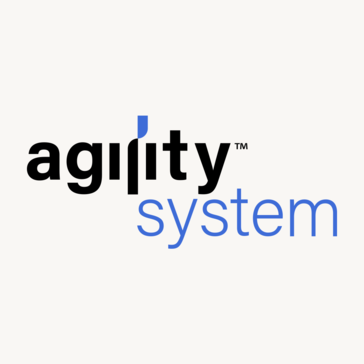4.9
ContextMinds Review
Discover our ContextMinds review. Explore features, pricing, security, support, updates, and its overall value for money. See if it’s right for your team!

Introduction to ContextMinds
ContextMinds is an innovative AI-powered platform built for efficient content research and planning. It allows users to visually map out topics, uncover related ideas, and structure content using dynamic mind maps. Understanding ContextMinds means appreciating how it automates information gathering, significantly reducing manual research time. Getting started with ContextMinds is straightforward for those needing better idea organization. This ContextMinds review explores the platform's core functionalities and real-world uses. We examine the ContextMinds basics and assess the tangible benefits of ContextMinds for creators and marketers seeking enhanced productivity and deeper topic insights. Discover if this tool can truly transform your content creation process.
Comprehensive overview and target audience
ContextMinds functions primarily as a visual research and content ideation platform. It leverages artificial intelligence to help users explore topics deeply, uncover related concepts, and structure their thoughts or content outlines using interactive mind maps. Think of it as a digital whiteboard supercharged with research capabilities, designed to streamline the often complex process of understanding a subject and planning content around it. The system suggests relevant keywords, questions people ask online, and related academic papers or articles, pulling information directly into the mapping interface.
The target audience for ContextMinds is quite diverse, yet centered around individuals and teams heavily involved in research, writing, and knowledge management. Key user groups include:
- Content marketers and SEO specialists seeking efficient ways to brainstorm topics, conduct keyword research, and create comprehensive content briefs.
- Bloggers and writers looking to overcome writer’s block, organize their ideas visually, and find unique angles for their articles.
- Researchers and academics needing tools to explore literature, map out complex subjects, and synthesize information from various sources.
- Students aiming to understand difficult topics better, prepare for exams, or structure essays and presentations effectively.
- UX researchers and product managers mapping user needs and information architecture.
For these users, the platform promises significant time savings and deeper insights compared to traditional research methods. Continuous **ContextMinds updates and new features** aim to enhance this efficiency, adding functionalities like improved AI suggestions and integration options. Users often report strong **ContextMinds value for money**, particularly when factoring in the time saved during the research and planning phases. A thorough **ContextMinds pricing comparison** reveals several tiers, making it accessible for individuals as well as larger teams, although evaluating specific needs against plan limits is advisable. Furthermore, understanding the importance of user data, reliable **ContextMinds security features** are in place to ensure information protection. To help users maximize the tool’s potential, comprehensive **ContextMinds support and training resources**, including tutorials and documentation, are readily available, facilitating a smoother learning curve for newcomers.
User experience and functional capabilities
The user experience within ContextMinds is largely centered around its visual interface. Navigating the mind mapping canvas is generally intuitive, employing familiar drag and drop mechanics to organize concepts. Initial ContextMinds user experience insights often praise the clean design which facilitates focus during research sessions. However, while basic navigation is simple, mastering the full suite of AI suggestions and topic exploration tools can present a slight learning curve, particularly for users new to visual thinking platforms or AI research assistants. The platform aims to balance powerful functionality with ease of use, though maximizing its potential requires some initial familiarization.
Understanding how to use ContextMinds effectively unlocks its core value proposition: streamlining research and ideation. The process typically involves these steps:
- Begin by inputting a central topic or keyword onto the digital canvas.
- Utilize the AI engine to generate related keywords, popular questions, relevant academic papers, and web articles.
- Select and drag pertinent suggestions onto the map, creating nodes representing distinct ideas or information points.
- Visually connect these nodes to build relationships, hierarchies, and logical flows, effectively structuring your understanding or content outline.
- Add notes, links, or summaries to individual nodes for deeper context.
- Export the completed map or outline for use in content creation or further analysis.
Getting started requires minimal setup, making the initial phase feel less like a complex installation and more like following a simple ContextMinds implementation guide: sign up, create a map, and begin exploring. The platform operates primarily as a standalone research environment. Currently, deep options for directly integrating ContextMinds with other tools, such as dedicated writing apps or project management systems, appear limited. Users typically export their findings and maps as images or text documents to incorporate them into broader workflows, representing a potential area for future enhancement through ContextMinds updates and new features.
Despite its strengths, users might encounter some minor hurdles. Common problems with ContextMinds can include the AI occasionally suggesting slightly irrelevant topics, especially for niche subjects, requiring manual filtering. Large, complex maps can sometimes become visually overwhelming if not managed carefully, impacting the otherwise smooth user experience. Learning to effectively filter and organize the wealth of information presented is key to avoiding these potential drawbacks. The platform continuously evolves, with ContextMinds updates and new features regularly addressing user feedback and refining the AI algorithms to improve suggestion relevance and interface performance.
To maximize efficiency and insight generation, adopting certain strategies is beneficial. Best practices for ContextMinds include:
- Starting with a broad topic search before gradually refining the focus based on AI suggestions and discovered connections.
- Regularly organizing and pruning the mind map to maintain clarity and prevent information overload.
- Leveraging the notes feature within nodes to capture detailed thoughts, source links, or specific data points without cluttering the main visual structure.
- Experimenting with different map layouts and connection types to best represent the relationships between ideas.
- Saving map versions periodically, especially during extensive research sessions, to track progress and retain different exploratory paths.
By applying these techniques and understanding its capabilities and limitations, users can significantly enhance their research and content planning processes.
Who should be using ContextMinds
ContextMinds is ideally suited for individuals and teams whose work heavily involves research, ideation, and strategic planning. If you frequently grapple with complex information landscapes, struggle to organize disparate ideas, or need a more efficient way to plan content, this platform offers a compelling solution. It transforms the often chaotic process of exploration into a structured, visual journey, making abstract concepts tangible and manageable.
Several professional and academic groups stand to gain significantly. Content marketers and SEO specialists leverage it to rapidly uncover relevant subtopics, identify content gaps, and build data informed content strategies. Bloggers and writers find it indispensable for moving past creative hurdles, developing unique angles, and meticulously structuring their narratives. Researchers and academics utilize its AI powered suggestions to explore existing literature efficiently, map intricate theories, and synthesize diverse sources visually. Students appreciate its ability to simplify complex subjects for better comprehension, outline detailed essays, or organize research for presentations. A common ContextMinds use case scenario might see a UX researcher mapping user journey pain points or a product manager visualizing feature relationships. Anyone needing clarity amid complexity benefits.
The core value lies in organizing thoughts dynamically and discovering connections that linear note taking or simple searches might miss. This visual approach, supercharged by AI, leads to deeper insights and substantial time savings in research and planning. While getting started is straightforward, ContextMinds delivers maximum impact to those willing to fully engage with its visual methodology. Users committed to implementing the best practices for ContextMinds, such as iteratively refining searches, actively curating AI suggestions, and maintaining map clarity, will find it a powerful ally. It truly shines for those seeking smarter workflows and a more profound understanding of their chosen topics.
Unique Features offered by ContextMinds
ContextMinds distinguishes itself through a powerful combination of unique features centered around its AI driven research capabilities seamlessly blended with a visual workspace. Unlike traditional research tools or basic mind mapping software ContextMinds actively assists the user by suggesting relevant information directly within the map. This includes related keywords questions people ask online pertinent academic papers and relevant web articles saving considerable time and uncovering angles that might otherwise be missed. The ability to visually organize this AI curated information dynamically allows for a deeper understanding of topic relationships and content structures.
Key unique elements offered by ContextMinds include:
- Artificial intelligence that proactively suggests related concepts keywords questions and source materials based on your current map focus.
- A dynamic visual mapping canvas enabling users to structure complex information intuitively building connections and hierarchies between ideas.
- The capability to embed detailed notes source links and summaries directly within individual map nodes keeping context rich information organized and accessible.
While customization options dont extend to altering the core interface aesthetic users tailor ContextMinds extensively by controlling the research direction and structuring the visual map to fit their specific needs. This process itself is a form of powerful customization. Strategic use allows for Customizing ContextMinds for business growth; teams can focus the AI on uncovering specific market trends competitor analysis points or customer pain points shaping the research output to align precisely with business objectives. The flexibility in map structure and content organization caters to diverse planning requirements.
Regarding Integrating ContextMinds with other tools the platform primarily facilitates this through export options. Users can export their completed mind maps and research findings as images or text documents. This content can then be incorporated into dedicated writing applications project management software or presentation tools completing the workflow. This straightforward approach ensures ContextMinds for small businesses remains a highly valuable asset; it delivers sophisticated research power without necessitating complex or costly direct integrations making advanced content planning and ideation accessible. The focus is on providing actionable insights efficiently.
Pain points that ContextMinds will help you solve
Many professionals and students involved in research writing and planning frequently encounter frustrating obstacles. ContextMinds is designed specifically to alleviate these common challenges turning complex processes into manageable tasks. If you recognize any of the following difficulties in your workflow this platform offers tangible solutions.
Are you drowning in information overload. The sheer volume of articles data points and related concepts available online can be overwhelming leading to disorganized notes and lost insights. ContextMinds tackles this directly providing a visual canvas to map out information connecting ideas logically and preventing key details from getting lost. It helps structure complexity making research less chaotic and more productive. This organizational benefit scales making it valuable regardless of project scope which is ideal when considering ContextMinds for different businesses sizes.
Do you spend excessive time on manual research. Sifting through search results vetting sources and identifying relevant keywords consumes hours that could be spent on analysis or creation. ContextMinds employs AI to automate much of this discovery process. It proactively suggests pertinent keywords related questions academic papers and web articles significantly cutting down research time and effort. You get faster access to quality information boosting overall efficiency.
Struggling with writer block or finding unique angles. Generating fresh ideas and structuring content effectively can be difficult. The visual ideation process within ContextMinds combined with its AI suggestions helps spark creativity. By exploring topic relationships visually users often uncover novel perspectives and logical structures for their articles reports or presentations overcoming creative hurdles. This is essential when Customizing ContextMinds for business growth focusing research on niche opportunities or specific marketing messages.
ContextMinds addresses several key operational bottlenecks:
- Difficulty understanding complex subjects quickly.
- Inefficiency in planning comprehensive content strategies.
- Challenges in organizing disparate research findings coherently.
- Time lost switching between research gathering and outlining tools.
While deep options for Integrating ContextMinds with other tools are mainly through exports the ability to consolidate research and initial structuring within one platform before exporting minimizes context switching. By transforming scattered information into structured visual maps ContextMinds provides clarity focus and a significantly smoother path from research to final output solving critical pain points for knowledge workers everywhere.
Scalability for business growth
ContextMinds is not merely a tool for individual productivity; its capabilities extend significantly to support and drive business expansion. As organizations grow their content needs research demands and strategic planning become more complex. ContextMinds provides a framework to manage this increasing complexity effectively. Its structured approach to information gathering and visual mapping allows teams to collaborate on larger projects maintain clarity across departments and build a shared understanding of key topics markets or customer segments.
The ability to tailor research focus is central to its value for expansion. Customizing ContextMinds for business growth means directing its powerful AI to uncover specific market opportunities analyze competitor strategies or identify emerging trends relevant to your industry. This transforms the tool from a simple ideation platform into a strategic intelligence asset helping businesses make informed decisions about where to expand their efforts product development or marketing campaigns. It ensures research aligns directly with strategic objectives.
Furthermore the platform inherently supports scaling operations. Customizing ContextMinds for business scalability involves leveraging its features to standardize research and planning workflows across growing teams. New team members can be onboarded more quickly using established map templates or processes ensuring consistency and efficiency even as the organization expands. The visual nature aids knowledge transfer allowing complex strategies or research findings to be easily understood and built upon by different team members or departments over time.
ContextMinds can handle increasingly sophisticated projects requiring deeper research and more intricate planning without becoming unwieldy provided best practices for map management are followed. This capacity to manage growing volumes of information and complexity ensures that the platform remains a valuable asset throughout a company lifecycle supporting sustained growth rather than becoming a limitation. It fosters a scalable foundation for knowledge management and strategic foresight.
Final Verdict about ContextMinds
ContextMinds emerges as a genuinely innovative tool designed to tackle the often overwhelming tasks of research ideation and content planning. Its core strength lies in the intelligent fusion of AI driven information discovery with an intuitive visual mind mapping interface. This combination effectively streamlines workflows saving users considerable time and effort typically spent on manual research and organizing scattered ideas. It successfully automates significant parts of the discovery process suggesting relevant keywords questions academic papers and web articles directly within a flexible workspace.
The platform proves particularly valuable for content marketers SEO specialists writers researchers and students; essentially anyone who needs to synthesize complex information structure thoughts logically or overcome creative blocks. It directly addresses common pain points like information overload inefficient research practices and difficulty finding unique content angles. The visual approach facilitates deeper understanding and helps uncover connections that might be missed using traditional linear methods. Furthermore its scalability features demonstrate its utility beyond individual use making it a viable asset for growing teams and businesses looking to standardize research processes and align efforts with strategic goals. Customizing ContextMinds for specific business objectives like market analysis or competitor tracking is straightforward.
While the user experience is generally positive with a clean interface mastering its full potential requires some initial learning especially regarding the AI features and managing large complex maps. Direct integration options with other software are limited relying primarily on exporting maps and data as images or text. However this doesnt significantly detract from its core value proposition which centers on efficient research consolidation and initial structuring within one environment.
Our final verdict on ContextMinds is overwhelmingly positive. It is a powerful well designed platform that delivers tangible benefits in productivity and insight generation for its target audience. Minor limitations like the learning curve and export based integration are easily outweighed by its strengths in AI powered research assistance and visual organization. ContextMinds is highly recommended for professionals and learners seeking a smarter more efficient way to navigate complex information landscapes and plan their content or research projects effectively.
Advantage
Disadvantage
Visually map content ideas & keyword research
AI suggestions accelerate topic & keyword discovery
Analyze SERPs visually within your mind map
Generate structured content briefs from visual plans
Streamline content strategy & research workflow
Disadvantage
Steeper learning curve for mastering all features
Interface can sometimes feel visually cluttered
Subscription cost may be a barrier for some
Fewer third-party integrations than some alternatives
AI suggestions may require manual refinement
Rating
Free
$0 per Month Paid Monthly
- 3 maps
- Unlimited shared maps
- 10 topic suggestions per map
- AI features
- Basic sharing options
- Export as PNG SVG PDF
- Publish on the web
Academic
$4 per Month Paid Monthly
- All features in Free+
- Unlimited private maps
- 50 topic suggestions per map
- Priority support
Pro
$9 per Month Paid Monthly
- All features in Academic+
- Unlimited topic suggestions
- Team features
Academic
$29 per Year Paid Yearly
- All features in Free+
- Unlimited private maps
- 50 topic suggestions per map
- Priority support
Pro
$59 per Year Paid Yearly
- All features in Academic+
- Unlimited topic suggestions
- Team features
Product Support
Web Based
Windows
Mac OS
Linux
Android
iOS
Phone Support
Email/Help Desk
AI Chat Bot
Live Support
24/7 Support
Forum & Community
Knowledge Base
Live Online
Documentation
Videos
In Person
Webinars
Company: ContextMinds OÜ
Email: support@contextminds.com
Address:
Harju maakond, Tallinn, Kesklinna linnaosa, Pärnu mnt 141, 11314, EstoniaPhone: Not Available
Implementation
Web Based
Windows
Mac OS
Linux
Android
iOS
Support
Phone Support
Email/Help Desk
AI Chat Bot
Live Support
24/7 Support
Forum & Community
Knowledge Base
Training
Live Online
Documentation
Videos
In Person
Webinars
Group text
Company: ContextMinds OÜ
Email: support@contextminds.com
Address:
Harju maakond, Tallinn, Kesklinna linnaosa, Pärnu mnt 141, 11314, Estonia
Phone: Not Available
Alternative Products
Web Based
Documentation, Videos
Email/Help Desk, Live Support, Forum & Community, Knowledge Base
Frequently Asked Questions
What exactly is ContextMinds?
ContextMinds is an AI-powered visual research, brainstorming, and content planning tool designed to help you organize ideas, discover relevant topics, and structure your content effectively using interactive mind maps.
How can ContextMinds help me?
It helps you overcome writer’s block by suggesting related concepts and questions, speeds up research by integrating keyword data and SERP analysis directly into your visual map, allows you to structure articles or presentations logically, discover content gaps, and generate comprehensive content briefs, ultimately saving time and improving content quality.
Who is ContextMinds best suited for?
ContextMinds is best suited for content creators, SEO specialists, marketers, researchers, bloggers, educators, students, and anyone who needs to research complex topics, brainstorm ideas visually, and plan content efficiently.
What are the key features of ContextMinds?
Key features include AI-driven topic and keyword suggestions, visual mind mapping with drag-and-drop functionality, integration of keyword metrics (search volume, difficulty), SERP result snippets for context, concept mapping, automatic content brief generation, note-taking within maps, and various export options (text outlines, images, OPML).
Is there a free trial or free plan available?
Yes, ContextMinds typically offers a free plan with certain usage limitations, allowing you to test its core functionalities before committing to a paid subscription; paid plans unlock more extensive features and higher usage caps.
How does ContextMinds compare to competitors?
Compared to traditional mind mapping tools (like Miro or MindMeister), ContextMinds integrates AI research and SEO data directly. Compared to dedicated SEO tools (like SEMrush or Ahrefs), it’s less about in-depth site audits and more focused on topic research and content structuring visually. Its unique strength lies in combining visual organization with AI-powered content research specifically for planning.
What are the main pros and cons?
**Pros:** Excellent for visual brainstorming and organizing complex information, AI suggestions accelerate research and idea generation, integrates keyword research and SERP analysis seamlessly, helps structure content logically, great for identifying related topics and user questions. **Cons:** Can have a slight learning curve for new users, AI suggestions may sometimes require filtering or refinement, the free plan has notable limitations, may lack the depth of highly specialized, standalone SEO or pure mind-mapping platforms.
Is ContextMinds worth it?
Whether ContextMinds is worth it depends on your workflow. If you benefit significantly from visual organization, struggle with topic research and structuring content, and want an integrated tool to streamline brainstorming, research, and outlining, then it offers substantial value and is likely worth the investment, especially considering the time savings. Trying the free plan is the best way to assess its fit for your specific needs.








